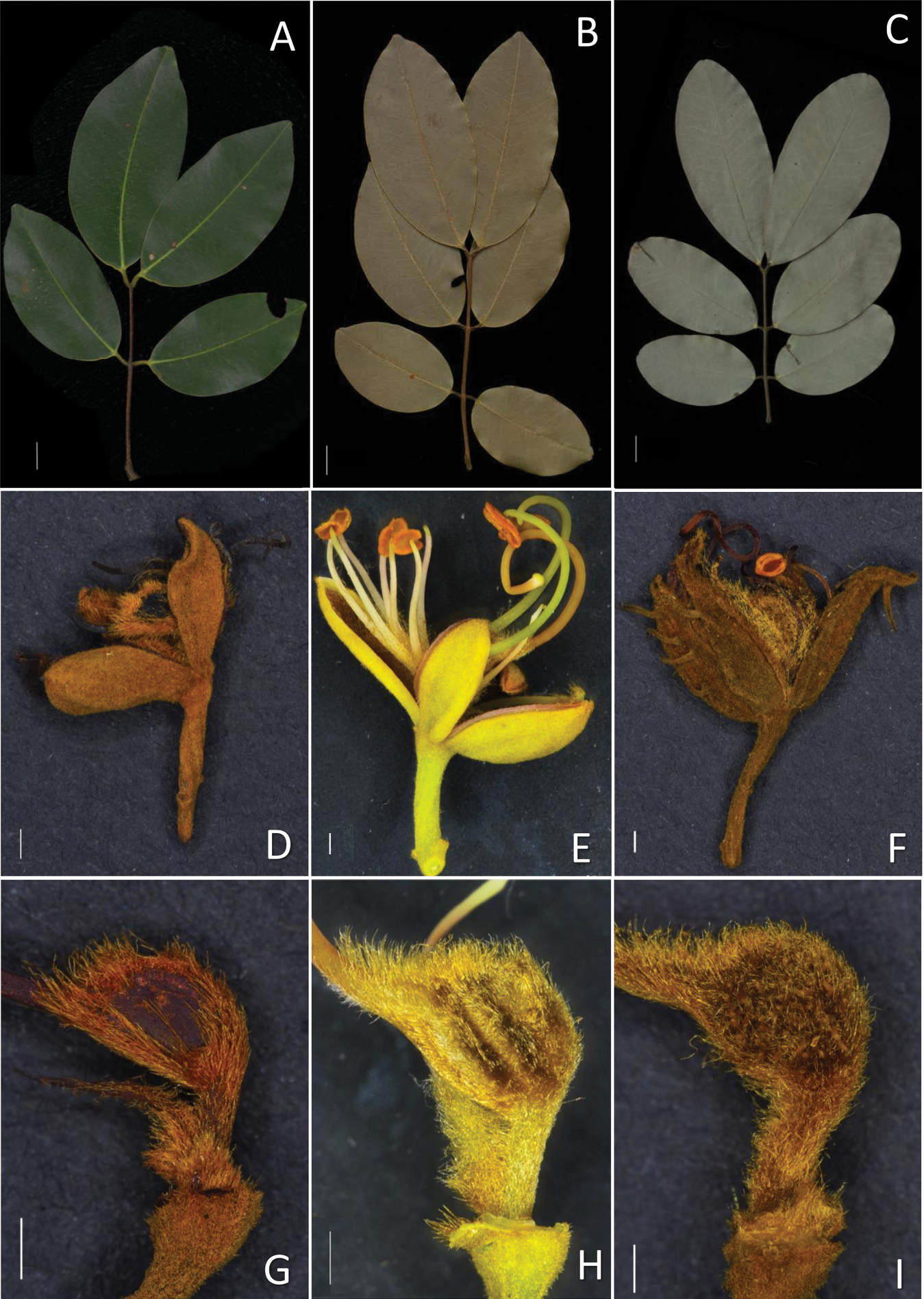
|
||
|
Comparisons of leaf and flower characters between Sindora × changiensis and its parent species. A, B, C leaves of (A) S. coriacea, (B) S. × changiensis and (C) S. echinocalyx respectively D, E, F flowers of (D) S. coriacea, (E) S. × changiensis and (F) S. echinocalyx respectively, showing the unarmed calyces of S. coriacea, S. × changiensis, and the spiny calyx of S. echinocalyx G, H, I Ovaries of (G) S. coriacea, (H) S. × changiensis and (I) S. echinocalyx respectively, showing the glabrous patch in the centre for S. coriacea; the densely pubescent ovary for S. × changiensis except for the three stripes across the width; and the densely pubescent ovary for S. echinocalyx, with tiny protuberances visible on the surface, which will later on develop into the spines on the fruit pods. Scale bars: 1 cm (A, B, C); 1 mm (D, E, F, G, H, I). (Photos: L.M. Choo). |